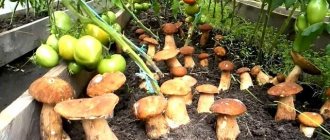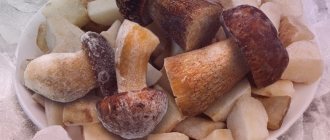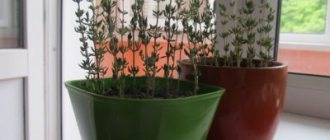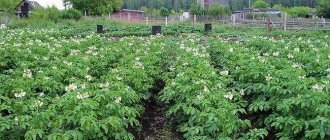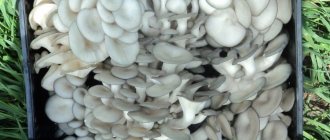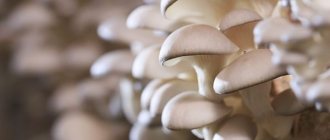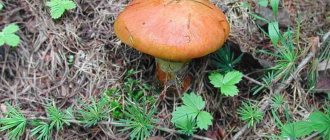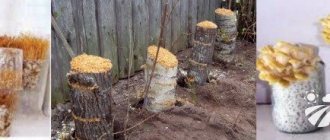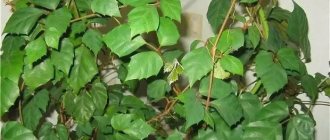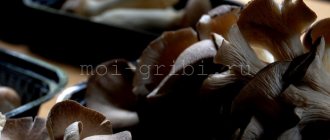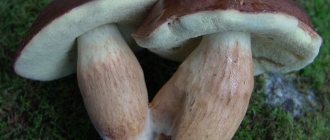The benefits of growing mushrooms in the cellar
Using a cellar for growing mushrooms is associated with the following advantages of this room:
It has an optimal temperature, especially in the summer. Even in very hot weather it is fresh there.
Coolness is best maintained in brick, stone or reinforced concrete rooms. If necessary, the air temperature can be easily adjusted using the cellar door.
Mushroom harvest
Optimal air humidity, which remains almost unchanged even in the hot season.
Mushrooms feel comfortable in the microclimate created in the basement, as it resembles their natural habitat. It is favorable for the development and formation of fruits.
So, the cellar is one of the most ideal premises for growing mushrooms.
Under what conditions does oyster mushroom fruiting occur?
Agricultural conditions are created in order to achieve maximum yield with minimal loss of time and product quality.
The terms read as follows:
- You should carefully monitor the room temperature; it should be 22-24 degrees Celsius. The temperature of the substrate itself should not exceed +28C, and air humidity 90-95 percent.
- Standard humidifiers should be used to maintain room humidity. At home, you can place containers of water between the mycelium.
- You only need to irrigate the air, avoiding moisture getting on the bags. Even small puddles on the floor should be wiped up.
- Oyster mushroom needs good ventilation and fresh air. The carbon dioxide content in the room should not exceed 1 percent.
Preparing the premises
Preparing the basement includes a number of important activities:
First of all, you should pay attention to the floor of the basement. It must be concrete. The earth floor is a breeding ground for harmful bacteria and other pathogens.
To prevent mold from appearing in the cellar, disinfection must be carried out before planting the mycelium. There are 4 ways to carry out this procedure. You can fumigate the room with a sulfur bomb or spray it with a 4% formaldehyde solution.
The whitewashing method using lime and copper sulfate is also a type of disinfection. It is also possible to treat the basement with chlorophos for this purpose.
After this event, to further prevent the occurrence of mold, it is advisable to install a box of sawdust at the entrance to the room.
Attention! After the disinfection procedure, it is necessary to ventilate the cellar.
The ideal material for making shelves or hangings is metal coated with plastic. This design will not rust.
The cellar needs ventilation. Its role is to eliminate carbon dioxide that will be released from the substrate. The “small hole” mesh will prevent insects from entering the room.
Harvesting wood for growing mushrooms
The basement needs lighting. Its intensity depends on the variety of mushrooms grown. If they like darkness, then one light bulb is enough. If they require good lighting, then you will have to install fluorescent lamps.
To monitor air humidity and temperature, you will need a thermometer and a hygrometer.
To grow mushrooms in the cool season, it is necessary to equip the basement with a heating device.
If you have a large room, it can be divided into 2 parts. Grow mycelium in one, mushrooms in the second.
In such a cellar the mushrooms will be truly comfortable.
Planting care and disease control
Caring for mushrooms involves preventing diseases and controlling various pests.
We have already carried out a number of activities when preparing the room and substrate before planting mushrooms. Any work with myceliums should begin from the places where champignons appear and gradually move on to more mature specimens. If you notice damaged mushrooms, they must be removed immediately and taken outside the premises.
When growing champignons, you should strictly monitor cleanliness, especially near the mycelium. Often champignons are affected by brown spotting, which appears in the form of brown and brown spots on the caps. Then they spread over the entire surface, and the fungus dies. Another disease of champignons is mummification. In this case, the affected mushrooms slow down and acquire a rough surface. As soon as you have discovered the affected mushrooms, it is better to completely remove the cell with them.
Purchase of substrate and mycelium
After preparing the room, you can go to a specialized store to purchase mycelium and substrate. But first you need to decide on the variety.
All popular mushrooms can be classified into one of two groups:
- soil,
- woody.
Representatives of the first type are ring mushrooms and champignons. Second - winter honey mushrooms, oyster mushrooms and shiitake. Growing any variety of mushrooms does not require excessive effort.
Mycelium is inexpensive. When purchasing it, it is advisable to follow the tips below:
- The seller must be verified.
- It is better to first purchase a trial batch of the product.
- You need to find out its characteristics: variety, strain, % and rate of grain fouling, resistance to mold, storage time and temperature.
- The color of the mycelium should be “healthy”. The presence of mold or the smell of rot is unacceptable.
- Mycelium should be stored in the refrigerator.
First landing results
You will have to pay a lot more money for the substrate. This is the name of the environment in which the mushrooms will grow. By the way, in order not to make a mistake with your choice, you need to read the instructions contained in the “mushroom” packaging.
Special farms and online stores sell germinated mycelium, which is already mixed with the substrate. So, it is important to buy high-quality materials in order to later get a decent harvest.
Additional useful tips and tricks
Growing mushrooms yourself in the basement can be a good family business. This process does not require a lot of financial costs and physical effort. In this matter, it is only important to carefully adhere to the rules for growing mushrooms, which are different for each species.
It is also recommended to use ready-made substrates, which are made using a certain technology, and special systems for providing humidity. All these devices can be purchased in specialized stores at an affordable price.
Self-preparation of the substrate
The most favorable time for preparing the substrate on your own is spring or autumn. To make it, you can use the following ingredients:
- About 70 kg of straw.
- Hay or leaves in the amount of 20-30 kg.
- Approximately 80 kg of bird droppings. It can be replaced with cow or horse manure.
- 6 kg of gypsum.
- Using this proportion will allow you to obtain approximately 250 kg of substrate.
Cooking sequence:
- A few days before the intended event, you should place the straw in water so that it gets wet.
- Then it, together with manure, must be laid out in a special hole in 3-4 layers.
- Every 3 days, the prepared substrate must be moistened and mixed.
- The end of the fermentation process usually occurs after 25 days.
- Signs that the substrate is ready are its sufficient friability, absence of ammonia odor and dark brown color.
This is one of the options for preparing a mixture in which mushrooms will grow. It will help you save a lot of money.
Special substrate preparation
When using any substrate, it is important that it does not contain pathogens of various fungal diseases. To do this, it is necessary to process the prepared mixture. Ways to conduct this event:
- hydroderma or hot water treatment;
- xerothermy or steam treatment of dry substrate;
- pasteurization or steam treatment of the moistened mixture.
Shelves for growing mushrooms
It is important to prevent the substrate from becoming waterlogged, especially if the gardener treats it with hot water. If such a disaster does occur, then do not touch the mixture for several days. This will allow the water to drain.
After this, the substrate should be crushed to small particles so that it retains moisture. If the raw material is moistened correctly, it will spring back in your hand, but water will not leak out.
It is in such raw materials that mycelium can be placed.
What kind of mycelium is needed?
Mycelium is also called mycelium. It is the vegetative body of fungi - a system of thin branching threads or hyphae.
The mycelium performs important functions, therefore without it the process of growing mushrooms will not take place:
- participates in sporulation and is responsible for preserving the formed spores;
- helps organisms attach to nutrient substrates;
- adapts well to the environment;
- With the help of enzymes, it processes cellulose, obtaining from it substances available for growth and development.
Mycelium is an important organ responsible for the vegetative reproduction of organisms.
Purchasing a finished product
To grow champignons at home, it is recommended to use grain mycelium , since it is not only convenient to sow, but it does not require additional processing. When purchasing mycelium, pay attention to its appearance: the grains should be yellow with a slight orange tint.
It is not recommended to purchase mycelium with dark spots - this is evidence that mold is present. The quality of planting material is also determined by smell: there should be a clearly defined aroma of fresh mushrooms. If you notice an ammonia odor, the product was not stored properly and is spoiled.
Be sure to pay attention to the manufacturer's company. It is advisable to choose mycelium from a well-known and large supplier. You shouldn’t buy a lot of mycelium at once; it’s better to sample it first. If there are no problems with germination, the formation of mycelium will be good, then purchase a large batch.
Growing mycelium yourself
Before planting mushrooms, many gardeners and gardeners grow mycelium themselves, citing the fact that this way they will be able to obtain a high-quality product. Mycelium grown at home can be used as compost or grain.
The preparation of grain mycelium occurs according to the following scheme:
- Pour 10 kg of grains into a container, add 15 liters of water.
- Place on low heat, bring to a boil and simmer for half an hour to an hour. The grains should not be boiled, but should be soft.
- Drain the water, dry the grain, and then pour the finished material into liter jars. Make holes in the lids and beans.
- Seal the holes in the lids with cotton swabs. Place the jars in an autoclave with a pressure of 1.5 atm. for 30 minutes.
- Place the mycelium in the cooled grain, or rather in its holes.
- Place the jars in a thermostat with a temperature of 24 degrees, do not remove them until the mycelium completely occupies the entire nutrient medium.
To obtain compost mycelium, the following procedures are performed:
- Take 3-liter jars and fill them 2/3 with champignon substrate. Compact well.
- Roll up the jars with lids, making 3-centimeter holes in them, covering them with cotton swabs.
- Heat the compost to 24 degrees, place the mycelium in it.
- Tightly sealing the holes in the lids will help prevent infection of the mycelium.
Features of growing oyster mushrooms in the cellar
One of gardeners' favorite mushrooms is oyster mushroom. It can be grown all year round. This activity must be started after proper preparation of the raw materials. When using a cellar for these purposes, you must adhere to the following technology:
- Place the substrate in layers in polyethylene bags.
- Make holes in them about 2 cm in size every 10 cm.
- Before the bookmarking procedure, you need to grind the mycelium without opening the bags.
- Then it should be spread between layers of substrate.
- This procedure must be carried out under completely sterile conditions.
- The compartment where the bags for mycelium germination will be placed should be dark. There it is necessary to maintain 95% air humidity. In this case, the temperature should be about 22-25 °C. The bags are kept in this part of the cellar for about a month.
- Then, for the mushrooms to grow, they are transferred to a colder compartment with a temperature of 12-18 ° C and a humidity of about 95%. Mushrooms need 12 hours of light.
- The ventilation system should not be neglected. It must be there. You can circulate air using a fan. In this case, 3-4 buckets of water should be placed in the compartment.
- Oyster mushroom spores are allergenic. Therefore, you should wear a respirator when working in the cellar.
- The contents of the bag must be replaced if the crop is harvested 2 times. Up to 100 kg per 1 m² - this is how much mushrooms can be collected within a year.
Ripening oyster mushrooms
Compliance with this technology is mandatory if preference is given to oyster mushrooms.
Planting mushroom mycelium (inoculation)
So, the substrate is ready and placed in the cellar; now you need to add fungal mycelium to it in order to grow mycelium. Mycelium is grown industrially in laboratories under sterile conditions. You can buy it in gardening stores or order it online.
In order to grow mushrooms on 1 square meter of substrate, you will need 500 g of compost mycelium or 400 g of champignon grain spores.
We place the “seeds” in the substrate. If you have prepared the compost correctly, it should spring back slightly when pressed. We make five-centimeter depressions at a distance of 20 centimeters from each other and place a small amount of compost mycelium in each depression. If you purchased champignon spores, you just need to scatter them over the surface. Gradually, the mycelium threads will begin to grow across the substrate.
The time of growth of the mycelium, before the fruiting bodies of the mushrooms have yet appeared, is called incubation. During this period, it is necessary to maintain air humidity in the cellar at 70–95%. To prevent the substrate from drying out, you can cover it with paper or cloth and periodically spray it with a spray bottle.
The temperature at which mycelium grows is 20–27 degrees. Mushroom threads will begin to actively spread within ten to twelve days. Then the surface of the substrate should be covered with 3–4 centimeters of soil and wait another 3–5 days. The soil is not just from the garden, but a mixture of peat (5 parts), limestone (1 part) and soil (4 parts). Do not forget about periodic spraying with water.
Rules for growing honey mushrooms
How to grow mushrooms at home so you can harvest them all year round? How to create the necessary conditions for breeding? Substrate blocks can be made from chopped straw, sawdust, tree leaves, seed husks or dry corn stalks.
You should adhere to the following technology for growing honey mushrooms:
- Pour boiling water over the mixture for half a day.
- When it cools down, mix with small mycelium.
- Place in polyethylene bags ranging in size from 15 to 65 kg and tie them.
- Remove to cellar.
- After 3 days, cut holes about 5 cm in size in the bags. You can remove the bags completely.
- After about 2 weeks, the fruiting bodies will sprout. It will be necessary to create a temperature regime for them from +14 to +16 °C and provide access to light.
- Ventilation outlets to the surface are required.
- For year-round cultivation, it is necessary to maintain the temperature within +25 °C using a heater.
So, the technology for growing honey mushrooms and oyster mushrooms is not the same.
Expert opinion
Yulia Yurievna
I have a large garden and vegetable garden, several greenhouses. I love modern methods of cultivating plants and mulching the soil, and I share my experience.
Ask a Question
Oyster mushrooms
Unlike champignons, growing oyster mushrooms in the basement requires different conditions. Wooden beams are best suited for them:
- prepare large wooden stumps, clearing them of rotten parts;
- treat the wood with a strong solution of potassium permanganate;
- stumps are infected with mycelium - oyster mushrooms develop best on non-coniferous trees.
To infect stumps, sawdust or straw is taken, and the substrate is mixed with mycelium and placed in a felt bag. They hang it in the cellar at a temperature of 22 to 25 degrees Celsius. As soon as the first crop emerges, reduce the temperature to 12 degrees.
Oyster mushrooms are the most unpretentious type of mushroom, but they do not tolerate bright light. The light should be weak and diffused. The first fruits can be collected within 2 weeks after the timber is infected. The total fruiting period is up to 2 months.
Growing champignon mushrooms in the cellar
How to grow champignons in a basement or cellar? You need to start by preparing the optimal substrate, purchasing equipment for the selected location, as well as carrying out work to disinfect such a room. It is important that it be equipped with ventilation and heating devices that are easy to regulate. Champignons do not require lighting for normal development, so lighting is required only for the convenience of the gardener. These mushrooms are most often planted on compost; this substance provokes the release of carbon dioxide. Such processes lead to musty air, which champignons cannot tolerate. Therefore, a hood is needed. For convenience, we recommend dividing the cellar where you want to grow champignons into several zones. One part will be needed to populate the mycelium in the prepared mixture, and the other will be allocated directly for the growth of fungi. It is important to remember that these processes require different temperatures, so you need to take this into account when arranging heating devices. Considering the presence of different strains of the described fungi, when preparing the substrate, you need to take into account the recommendations for a specific mycelium. But there are also some universal recommendations. Thus, the best raw material for the future substrate is horse manure. When purchasing this material, you need to clarify what the animals that produced it ate. Preferably hay rather than green feed. You can prepare the mixture yourself by adding urea - 3 kg, superphosphates - 13 kg, saltpeter - 8 kg and gypsum - 18 kg to 850-900 kg of the specified substance. Although other organic waste can be used as an alternative to horse droppings, this may have a negative impact on the harvest. This option is well suited for champignons. If the plantation is large and a lot of substrate is required, you can use another scheme: 2 thousand kg of manure, 50 kg of straw, 5 kg of urea and the same amount of superphosphates, 8 kg of ammonium sulfate, 7-8 kg of chalk. In this case, the straw must first be kept in warm moisture. Afterwards it is laid out in layers interspersed with manure. During the process, the substance must be sprayed with warm moisture. After 4 days, urea and superphosphates are added to the resulting mixture. Next, the future substrate is mixed once every 4-5 days for a month. Towards the end we recommend mixing in gypsum. The compost is placed in the cellar, and then the mycelium is populated. For 1 sq.m. you need 500 g of mycelium from compost or 400 g of grain spores. In the first case, you need to spread the material into holes at a distance of 20-25 cm, and the spores are simply sprayed. During the development of the mycelium, very high humidity and a temperature of 25-26 degrees are required. After two weeks, we recommend sprinkling the beds with a three-cm layer of peat and soil mixture. Afterwards, reduce the temperature to 16-17 degrees and the growth of mushrooms begins. The harvest can be harvested in three or four months. Mushrooms need to be carefully twisted, without using a knife. It is better to sprinkle the removal site with soil.
Step-by-step instructions for beginners
There are several basic step-by-step rules that you need to know when planting and growing mushrooms at home. If done correctly, you will be able to regularly obtain large harvests of mushrooms.
Landing
After preparing the substrate and placing it in boxes or bags, it is planted with mycelium, which is buried 5 cm. A distance of 20 cm is maintained between the depressions. It is recommended to perform landing in a checkerboard pattern. After planting, sprinkle the mycelium with soil.
If fungal spores are planted, they are sown on the surface of the soil. After sowing, there is no need to sprinkle them with soil and moisten them. The soil is covered with a cloth and moistened regularly. The mycelium grows within five days. At this time, the humidity in the room is maintained at 80-95% and temperature 22-27 degrees. After 12 days, the surface is covered with 1 part limestone, 4 parts soil and 5 parts peat. The thickness of the layer should be at least 3 cm. After this, another 5 days should pass, the soil should be periodically moistened. After another 5 days, the temperature is lowered to 13-16 degrees.
Growing and care
Although there is no need for constant care for mushrooms, it is necessary to first prepare the room and create special conditions in it:
- Growing equipment. Depends on the method of growing champignons. The best way is considered to be growing in bags. For this purpose, special supports with hangers are useful, on which bags with substrate are suspended. It is recommended to use plastic equipment - it does not deform, does not corrode, and is much cheaper.
- Optimal temperature. Champignons do not require high temperatures, therefore they do not create greenhouse conditions. You just have to insulate the room and install thermal insulation, which helps retain moisture. Heating devices must also be installed - the temperature should not fall below 13 degrees. The elevated temperature is set only at the initial stage. For additional heating, the use of infrared lamps is permitted.
- Humidity level. Champignons love moisture, so the air in the room must be constantly humidified. It's simple: use sprayers or special electronic humidifiers. The humidity level is not lower than 70-90%.
- Ventilation and lighting. Be sure to regularly ventilate the room. It is better to use hoods that deliver fresh air. But if you do not plan to grow in large volumes, it is permissible to manually ventilate the room. Several garden lamps are installed for lighting.
It is equally important to take care of fertilizer. As the mycelium grows, it gradually appears on the surface, and within a couple of weeks it will be completely above the soil. A fertile substrate poured on top will help to avoid drying out and destruction of the still fruitful mycelium. Fertilizer consisting of 9 parts peat and 1 part chalk is also added to the soil. For 1 sq. m, 40-50 g of the mixture are evenly scattered.
Harvesting Rules
From the moment of sowing to the harvest of the first harvest, 3-4 months pass. Collect young medium-sized mushrooms, those with a whole membrane that connects the stem and cap. It is recommended to collect mushrooms with heavily opened caps as seed material - they lose their beneficial properties.
It is forbidden to pick mushrooms with a darkened light brown cap - they can cause intoxication of the body and lead to severe poisoning.
Champignons are not cut off like wild mushrooms, but twisted. The hole remaining after collection is lightly sprinkled with compost. The mushroom will grow in this place again. Active fruiting of champignons lasts 8-14 weeks. During this time, the crop is harvested up to 7 times. Further, the yield decreases, so the mycelium is removed and the substrate is disposed of.
After fruiting stops, the mycelium is removed and used as food for the next generation. The remaining substrate is not reused, because it loses its fertile properties. From 1 sq. m, up to 60 kg of mushrooms are collected.
The most common fungal diseases
Prompt control of fungal diseases will help prevent yield decline. Most often they are caused by:
- parasitic mushrooms,
- bacteria,
- viruses.
Parasitic fungi usually cause enormous damage to fruiting bodies. The damage they cause depends on the time of their occurrence. The later the parasitic fungi appear, the less losses there will be.
Devices for oyster mushrooms
The appearance of brown mold fungus leads to a disease called brown plaster. Champignons suffer from it more than others.
This disease is characterized by the appearance of white spots that gradually darken from the middle. To avoid it, you need to use the right substrate.
Green mold can only be prevented; it cannot be treated. For this purpose, the substrate should be properly composted. When pasteurizing, do not allow it to overheat.
There are other types of mold. In addition, mushrooms can be affected by white or dry rot, etc.
There are bacteria that cause serious fungal diseases. For example, bacillus. In this disease, bacteria do not affect the development of mycelium. But due to their fault, the fruiting bodies develop more slowly and lose their shape.
In addition, mushrooms may be subject to, for example, bacterial spotting or affected by Trichoderma.
Spraying the premises twice during the year with a 4% chlorine-lime solution will help to avoid infection. In addition, the walls must be whitened the same number of times with the same 1% composition.
Viruses can reduce the yield or lead to its loss. For example, champignons often undergo mummification of their fruiting bodies. It leads to slower growth and deformation of mushrooms. The substrate affected by this virus should be destroyed.
So, it is important to detect the disease in time and take preventive measures.
Champignon
Champignon mushrooms are characterized by a fairly large cap (from 5 to 18 cm), which has a white or light brown tint. The shape resembles a hemisphere. With age, the cap acquires a prostrate structure. Most often the surface is smooth. Only in some cases can it consist of small scales.
The stem of the edible mushroom is tall, up to 11 cm. Its shade is the same as the cap. The leg is smooth and slightly wider at the base. In the middle there is a wide white ring. The plates of the fruiting body, when young, are white or pink. Over time, they acquire a brown tint.
Comments (14)
Aurora
07/13/2017 at 11:14 |
My father-in-law was growing oyster mushrooms in the cellar. This is a special task. You buy good mycelium and go ahead, it grew by leaps and bounds, but you just started to suffer from allergies and the business had to be curtailed.Answer
Yulia Expert Plodogorod
10/17/2019 at 21:57 |
Hello Aurora! Similar problems could arise due to lack of air circulation. The substrate on which mushrooms are grown is often full of manure. This substance actively releases carbon dioxide. An excess of this substance in the atmosphere is not beneficial either for mushrooms or for the gardener who is forced to work in such conditions.
In addition, high humidity and products that mushrooms directly release into the air are harmful to people. For this reason, you cannot stay in such a room for a long time. And for those who suffer from respiratory tract or heart diseases, it is better not to do this at all, or to use personal protective equipment as when treating the garden with chemicals.
Considering what has been described, it is important at the initial stage, even before purchasing the substrate and mycelium, to properly prepare the room. If it is small and the mushrooms will be cultivated for individual consumption, you can get by with a regular hood. Large basements and cellars require forced ventilation.
It is better to place the corresponding devices in opposite walls of the room, then the circulation will be of sufficient quality. As an alternative, you can use one or more fans to circulate fresh air throughout the room.
The hood must be equipped with a filter, otherwise insects will enter the room, which may turn out to be pests or carriers of infections.
We would like to note that it is important to monitor humidity and temperature when actively using ventilation. If it’s cold outside, or vice versa hot, there is a risk of disrupting optimal conditions. Therefore, in addition to devices for maintaining humidity and heat, we need means that will measure these indicators.
Answer
Julia
08/01/2017 at 00:51 |
As the previous author said, good mycelium is already half the guarantee of a good harvest. Well, the dampness and darkness of the basement will improve the result, the main thing is prevention from pests.
Answer
Yulia Expert Plodogorod
10/17/2019 at 11:02 pm |
Hello Julia! You are absolutely right, high-quality planting material is very important when cultivating mushrooms. Therefore, it is important to be able to choose it. There are several indicators that you need to focus on. Some can be recognized by sight, while others cannot be identified with the naked eye.
For this reason, it is important to inspect the purchased material, at least externally, and also contact trusted suppliers and take into account the freshness of the products.
When purchasing grain mycelium, you need to check how uniform it is in color and germination rate. If it is light and evenly grown on all sides, it is a high-quality material for planting. The smell is also important. If you can open the package to determine this, you need to take into account that the aroma should be strong and pleasant, naturally mushroom.
We would like to note that some manufacturers make special filters on the packaging, through which you can evaluate the aroma of the purchased mycelium without damaging the integrity of the packaging. We recommend giving preference to such manufacturers.
If the smell is weak or completely absent, it is better not to purchase such mycelium. The absence of an intense aroma indicates that the mycelium is completely stale or inactive. Also, we do not recommend choosing materials where there are areas that are not overgrown. This also indicates a low ability for normal life activities.
You should absolutely not purchase material that has a sour smell. This sign indicates infection with bacteriosis. If the mycelium for sale has a greenish tint, this is a sure sign of mold. In both cases, such planting material will only infect the substrate and spoil it, bringing many problems.
It is advisable to find out how the mycelium develops inside. To do this, you need to break off part of the caked mass and see if there are any green spots there.
If the mycelium appears to be of high quality, it is better to check its viability before planting. To do this, without opening the package, you need to crush the mass that is inside. The package should be placed in a warm place at a temperature of 23-25 degrees and checked after two days. If the spores are active, then after a specified period of time everything will be overgrown again and covered with a white coating.
If you are planning a large-scale planting, we recommend not purchasing a lot of mycelium at once. It is better to take one package and conduct the described experiment. If the planting material turns out to be active and of high quality, you can purchase the missing quantity.
Answer
Alyona
09.24.2017 at 00:22 |
We live in the Krasnodar region, we have our own house. We have been growing champignons in the basement for five years. There is nothing complicated about this, the main thing is to fertilize it with manure (we take a horse cart and it lasts for six months) and maintain the temperature around +20.
Answer
Yulia Expert Plodogorod
10/17/2019 at 11:46 pm |
Hello, Alena! Champignons develop really well under the conditions described. Horse manure is the most optimal environment for the growth of this particular type of mushroom. We recommend adding some additional fertilizers to the manure. For example, superphosphates, saltpeter and urea.
It is also important that when the mycelium develops, the temperature is above 20 degrees. The optimal indicator is around 23-26. And when the fruiting bodies begin to sprout directly, you can make the atmosphere a little cooler, about 16 degrees.
Also, if mushrooms are cultivated for so long, the risk of developing an infection or pests increases. For this reason, we recommend not to neglect preventive measures. These include, first of all, regular disinfection of the premises and all tools used.
It is also desirable that the manure, which is used as the basis for the substrate, does not come into contact with the soil. And when soil is used at a certain stage, for example, to cover cut areas, it must be sterilized by first watering it with boiling water or calcining it in the oven.
Also, an earthen floor has a negative effect on the health of mushrooms. It is better that it is concrete or covered with tiles. Also, it is better to pre-treat floors even made from such materials with special products so that mold does not begin to develop there in damp conditions.
For the health of the crop, air circulation and the absence of stuffiness in the room are very important. Before starting cultivation, it is advisable to treat the walls with a mixture of lime and copper sulfate.
It is also advisable to have special clothes and shoes that will be used by the gardener exclusively when caring for mushrooms. After all, these items can easily carry infection or pests from the garden.
Answer
Igor
10.10.2017 at 00:32 |
Growing mushrooms in the basement is a complex and costly process, because you need to maintain high humidity, temperature, ventilation, lighting - these are all costs; high humidity can cause fungus to appear and even penetrate to the first floor from the basement. In addition, the actual yield is often much lower than the calculated one.
Answer
Natalia
11/18/2018 at 12:41 pm |
Everything worked out with the oyster mushrooms. I bought honey mushroom mycelium and the mushrooms appeared on the 27th day, but only in one slot out of 3. They started to appear in 2 slots, but yellow spots appeared and the growth of the mushrooms stopped. Tell me what to do?
Answer
Yulia Expert Plodogorod
11/19/2018 at 04:46 pm |
Hello, Natalia! Oyster mushrooms are not very whimsical, and therefore rarely get sick. More often they suffer from violations of growing technology, and diseases develop because of this on a weakened fruiting body. If there was a sharp temperature fluctuation in the place where the mushrooms grew, this could provoke wetting or drying, which provoked the death of the mycelium.
The yellow spots you encounter are often the result of improper ventilation. If this reason can be excluded, then the oyster mushrooms were probably affected by pests such as fungus gnats and midges. Take a few oyster mushrooms and look at their bases. If you find chewed areas or larvae themselves, then the cause of wilting and yellowing has been established. In this case, you need to spray the room with a drug from the pyrethroid group, for example, Decis f-Lux.
Also, the described spots appear due to water getting on the mushroom during watering, as well as a lack of substrate. This can lead to bacterial contamination of the mushrooms. If you don’t want to do an analysis in the laboratory, you can try to determine the presence of such a lesion yourself. To do this, feel the affected area. If it is slimy and the pulp is easily crushed when pressed, and also smells unpleasant, then most likely the problem is bacteriosis.
Answer
Yulia Expert Plodogorod
10/18/2019 at 00:14 |
Hello, Igor! Yes, in order to equip a place for cultivating mushrooms you will have to spend money on special equipment. At a minimum, this is an extractor hood and a heater that is suitable for wet rooms. And also a fog installation, which will create the necessary humidity.
If you plan to grow mushrooms for sale, with correct cultivation, high-quality substrate and mycelium, the costs will later pay off. But for this, the room must be large enough, that is, it is important to reap a good harvest.
If the mushrooms will be grown for your own consumption in a small room, and the costs of the described devices seem significant to the gardener, it may be better to choose another option. After all, besides growing in a basement or cellar, there are other possibilities.
True, most of them assume the presence of a garden. Mycelium can be colonized on the roots of a deciduous tree. It is important to choose a mature tree and a shady, moist area. The soil is fertilized with rotted humus. Further care requires only watering and shelter for the winter.
We would like to add that mushrooms should be grown under residential premises with some caution. This will require additional use of insulating materials to protect living spaces from moisture and dampness. To protect walls and floors from mold, even before growing, you need to treat them with special protective materials.
Answer
Vlad
03.11.2019 at 22:22 |
Hello, how good is a garage for growing oyster mushrooms? I’m especially interested in cultivation in winter. Is this possible, or should the cellar be a priority when choosing a room?
Answer
Yulia Expert Plodogorod
05.11.2019 at 01:17 |
Hello, Vlad! If you have a choice, we recommend growing mushrooms in the cellar. According to reviews from gardeners, such mushrooms develop better in basements. In addition, it is easier to create the necessary conditions in the cellar, namely heat and humidity.
If you decide to choose a garage, you need to consider what material it is built from. For example, thin metal walls do not make it possible to maintain optimal temperature, overheating in summer and cooling greatly in winter. Perhaps, having decided to use such a structure, you will have to start with thermal insulation. The type of material and the order of work depend on the size of the garage and the building materials from which it is built.
The walls themselves also need to be prepared and coated with a special disinfectant compound to avoid the appearance of mold and other problems.
In general, you can use the garage for planting oyster mushrooms. If you don’t need to grow oyster mushrooms all season, they can even be cultivated outside on stumps. It is important how well the room is equipped. You need to start with heating devices. It is important that they allow maintaining temperature stability.
We recommend equipping the room with a hood. If it is large, it is better to make two or install additional fans. The holes through which fresh air will flow must be equipped with a filter, otherwise harmful insects will enter the queen cell, which can ruin the entire harvest.
The greatest difficulty in cultivating oyster mushrooms in a garage will be maintaining high humidity. You can use a fog setup for this. If the building has metal structures, they must be treated in advance against rust. Wooden elements are coated with an anti-fungus and rot agent. You can use varnish.
When growing mushrooms indoors, it is important not only to create optimal conditions, but also to maintain them constantly. Fluctuations in temperature or lack of fresh air can negatively affect the condition of the mycelium and destroy the crop. When starting to grow oyster mushrooms in any room, we recommend making sure that it is possible to maintain them for a long time.
You can plant a small batch for the first time. This will help determine how correctly the conditions have been created and whether it is necessary to select another room.
Answer
Alexei
12/16/2019 at 02:12 |
Good afternoon. I grow oyster mushrooms in a two-zone room, when sowing I made a mistake: I sowed the mycelium in sour straw (10 blocks), the remaining 80 blocks, as expected, in a well-prepared substrate. After 4 days, pink formations appeared on the blocks with acidic straw at the cut points. These blocks were removed from the room. On the fifth day, I sowed the next batch of 90 blocks, on the first batch, pink formations appeared on another 3 blocks, were removed from the room, but on another 15, greenery appeared, it appeared on the blocks located next to the first blocks of acidic straw. Soon on the new blocks of the second The parties also went pink. I treated the entire room and blocks with peroxide, but it didn’t give any results. As a result, 50 blocks of the first batch were overgrown and conquered all the greenery (only small spots of ungrowth remained), I threw out the rest from the first batch. I decided to treat the room with a sulfur bomb, I couldn’t stand the blocks, on 50 blocks of the first batch I sealed the cuts with tape, did not touch the second batch at all. Please tell me whether it will be possible to eat mushrooms from these blocks after the sulfur bomb or throw out both batches???
Answer
Yulia Expert Plodogorod
01/04/2020 at 00:21 |
Hello, Alexey! The substances contained in the sulfur bomb, which is used to disinfect premises, are toxic to humans and animals. If inhaled, severe poisoning and even death can occur.
Before processing, you need to remove any food that will be eaten. This applies to both vegetables and any types of mushrooms. The checker can only be used in empty rooms.
Wooden structures and containers should be left, but metal ones should be removed. You can bring everything back no earlier than after 5-6 days. When the exposure period ends, it is important to ventilate the treated area.
This method is not suitable for very wet areas. And in cellars or other places where mushrooms are cultivated, humidity is often high.
Also, the green stuff you described is mold. If it has spread not only to the blocks, but also penetrated deep into the walls, floors, and wooden structures, additional measures are needed to destroy it.
Otherwise, the next crop, even after disinfection in the described way, may deteriorate again. It is prohibited to use other means at the same time.
Answer
